Tibet Network was founded in 2000 at the Third International Tibet Support Group Conference in Berlin. Initially called the International Tibet Support Network, the proposal for its formation – developed by a global group of Tibet campaigners – was welcomed unanimously.
For the first five years the Network functioned with the support and commitment of a globally elected Steering Committee and a part-time Coordinator who helped to establish mechanisms for coordination.
In 2006 substantial progress was made, including the employment of the first Executive Director and two Regional Coordinators. Three Regional Meetings were convened and the Network expanded its membership and resources.
In 2007 the Secretariat appointed an Olympics Campaign Coordinator, formally launched the Olympics Campaign, held a movement-wide consultation on post-Olympic strategic priorities, and organised an international members’ meeting and training.
In 2008 there were three Regional Meetings in Mexico City, Budapest, and Dharamsala, for the Americas, Europe and Asia respectively. A new Strategic Plan was completed, and a vigorous and widespread Olympics Campaign was conducted. The International Tibet Support Network also led the movement’s response to the biggest Uprisings in Tibet since 1959.
In 2009, the Steering Committee appointed a Campaigns Coordintaor to implement its Strategic Plan, and Network members carried out a global campaign to commemorate the 50th anniversary of the Tibetan National Uprising of 1959, the year the Dalai Lama left Tibet for exile. At the end of the year a Network-facilitated group of Tibetans and supporters attended the Climate Change Negotiations in Copenhagen (COP15) under the umbrella “Tibet Third Pole“. Regional Meetings took place in Dublin and Mexico City.
In 2010 further Regional Meetings were held in New York state and Dharamsala, India. The Network promoted actions on behalf of three political prisoners – Dhondup Wangchen, Tenzin Delek Rinpoche and Runggye Adak – as part of the “Free Tibetan Heroes” campaign, and a number of other campaign initiatives including resources to support Tibetan Cultural Resistance, to highlight the protests by students in defence of the Tibetan language, and to mark His Holiness’ 75th birthday.
In November 2010, the International Tibet Support Network changed its name to the International Tibet Network, to clarify that the Network is for all Tibet groups, not just Tibet Support Groups. Its Mission was unchanged. An International Meeting of Network Members was held in conjunction with the Tibetan Government-convened 6th International Tibet Support Group Conference.
In 2011 the Network held Regional Meetings in Asia, Europe and Mexico. We hosted the world’s first online press conference using Google+ in response to the 60th anniversary of China’s “peaceful liberation” of Tibet and launched a major public awareness and advocacy campaign “Stand Up for Tibet” in response to the emerging wave of self-immolations in Tibet.
In 2012 the Network continued to develop and expand “Stand Up for Tibet” campaign, and launched “Xi Jinping’s Tibet Challenge” prior to China’s Communist Party leadership handover. Regional Meetings were held in the Americas and Mexico and Network staff worked with the Tibetan Government in Exile on the implementation of campaign planning processes at an International Special TSG Meeting in Dharamsala, India in response to the self-immolation crisis, and facilitated workshops at 6th World Parliamentarians’ Convention for Tibet. A Secretariat Assistant was recruited to expand campaign support and Member outreach.
During 2013, the Network gave a greater focus to United Nations work, participating in China’s Universal Periodic Review, and campaigning to oppose China’s re-election to the UN Human Rights Council, as had been agreed during the Special TSG Meeting at the end of 2012. The “Stand Up for Tibet” campaign continued to be a major focus, with the tragic milestone of 100 self-immolations in Tibet being reached in February 2013. The Network also gave voice to the movement’s outrage at two major shooting incidents in Tibet during 2013 – in Tawu, eastern Tibet on the Dalai Lama’s birthday, and in Driru, central Tibet, in October. In addition to many other projects, the Network Secretariat also led a response to the rapid urban development of Lhasa which put the traditional character of the city at risk. A European Regional Meeting was held in Basel, in September.

